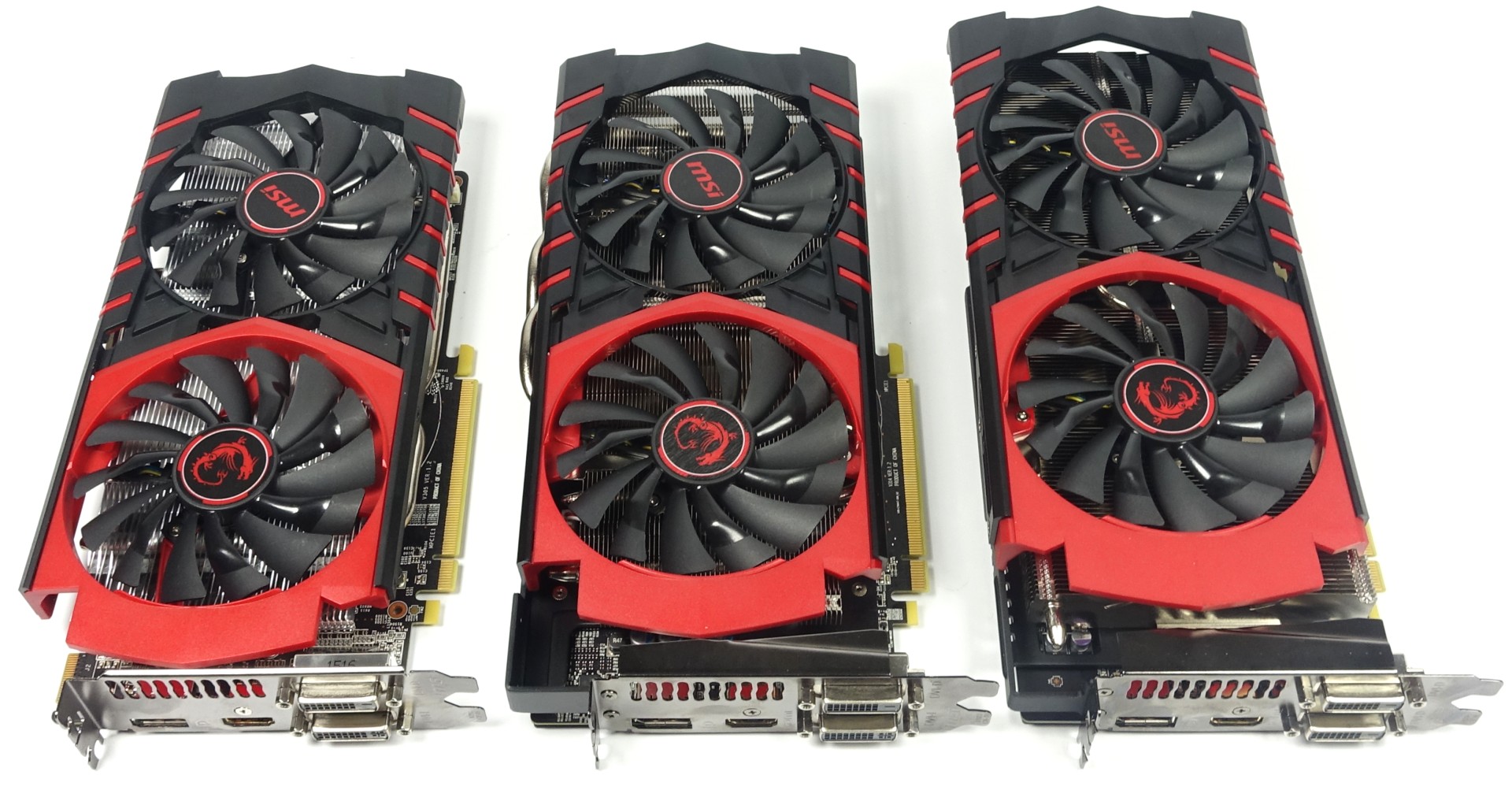AMD Radeon R9 390X, R9 380 And R7 370 Tested
AMD's 300-series Radeons dropped today, and we've got three MSI cards in the lab: the R9 390X Gaming 8G, the R9 380 Gaming 2G and the R7 370 Gaming 2G.
Conclusion
In the end, drawing a sweeping conclusion is difficult when there’s no actual reference graphics card. The next best approach is evaluating cards from AMD’s partners. MSI’s design cools effectively and minimizes noise, in spite of even higher power consumption than the previous generation.
AMD’s partner can’t be blamed for trying to optimize what it was given. The MSI R9 390X Gaming 8G and R9 380 Gaming G2 aren’t bad graphics cards per se; more than anything, we wanted to see a better (or really any) cooling solution for the R7 370 Gaming 2’s voltage regulator.
If you want to be objective, these cards might be able to handle the workloads they’re designed to address based on their price points. But when you compare the efficiency and overall performance of Nvidia’s competing models, AMD can’t come close. It can’t be disputed that Maxwell is the more modern architecture, and AMD’s rebranded boards can only do battle by offering them at a fitting price point.
Many enthusiasts care little about energy costs; if that’s you, you’ll have little trouble finding a 300-series card that makes you happy. But, in the end, real progress looks a lot different, and all that’s really left is the hope that AMD’s next launch is accompanied by an architecture able to remedy some of the areas where this one is showing its age. Unfortunately, and we’d like to be clear about this, the upcoming Fiji GPU will only be found in AMD’s high end for now.
Nvidia showed with its GeForce GTX 750 that a company can introduce its newest technology on a mainstream product and still get power users excited. AMD will take the opposite approach and start at the top again. With a bit of luck, it might reclaim the prestigious single-GPU performance crown. That’s not going to make the company a lot of money though; bragging rights alone won’t pay the rent (or a nine-digit R&D budget).
Bottom Line
All three of the GPUs in AMD’s newest graphics cards are being pushed as far as they will go. If you like to overclock, don’t count on a lot of available headroom.
The larger amount of graphics memory on AMD’s Radeon R9 390X is a welcome addition, but the 380’s 2GB is just not up to today’s standards. This really impacts performance in many games, especially when HD textures and mods come into play. It’s behind the times, and we’re perplexed by the company’s rationale there. A 4GB version would have been the way to go.
Get Tom's Hardware's best news and in-depth reviews, straight to your inbox.
AMD’s Radeon R7 370 is actually the most palatable of its three models, competing readily in the entry-level segment using acceptable efficiency, in spite of being three years old.
So, is this just another rebrand? Sadly, that’s pretty much the bottom line. There’s no real innovation to speak of in AMD’s 300 series, at least as far as these models go. Let’s hope for the company’s sake that Fiji doesn’t turn into Bermuda.
MSI R9 390X Gaming 8G
| Pros | Quiet • Short |
|---|---|
| Cons | Overclocking • Power consumption • Weight |
MSI R9 380 Gaming 2G
| Pros | Quiet • Short |
|---|---|
| Cons | Memory capacity • Overclocking |
MSI R7 370 Gaming 2G
| Pros | Quiet • Size • Weight |
|---|---|
| Cons | Performance |
MORE: Best Graphics Cards For The Money
MORE: How Well Do Workstation Graphics Cards Play Games?MORE: How To Build A PC: From Component Selection To Installation
MORE: Gaming At 3840x2160: Is Your PC Ready For A 4K Display
MORE: All Graphics Content
Igor Wallossek is a Senior Contributing Editor for Tom's Hardware Germany, covering CPUs and Graphics.

Igor Wallossek wrote a wide variety of hardware articles for Tom's Hardware, with a strong focus on technical analysis and in-depth reviews. His contributions have spanned a broad spectrum of PC components, including GPUs, CPUs, workstations, and PC builds. His insightful articles provide readers with detailed knowledge to make informed decisions in the ever-evolving tech landscape
-
Grognak 390X at 4K is the only one showing anything that could be called an improvement and that's entirely due to the additional RAM, which you can already get on a 290X. I fear for the future.Reply -
envy14tpe Again I am left disappointed....AMD please stop doing this to me. So what I learned is the 390X is the same as the 290X at 1440p or below (which is 95% or more of gamers) and the 390X only excels at 4k but still only on par with the 980 (non ti). Looks like I'm abandoning AMD for my next GPU. damn it.Reply -
FormatC ReplyWhy did you ignore 390?
I can only test what I have. Too less samples :(
The 390X is'nt a bad card per se - it depends a lot at the price and your personal preferences. -
fudoka711 Wait, I think I'm misunderstanding something. Is the 390x a rebranding of the 290x, but costing $100 more??Reply -
HideOut ReplyNice to see 980 Ti still stomps everything, glad I bought one... a wise investment!
These are rebadge cards, their new cards are due out in days. Fanboy -
de5_Roy MSI R9 390X Gaming 8G's texture fillrate in the spec table (1st page) may have been incorrect. the gpu-z screeny shows 193.6 GTexels/sec.Reply
